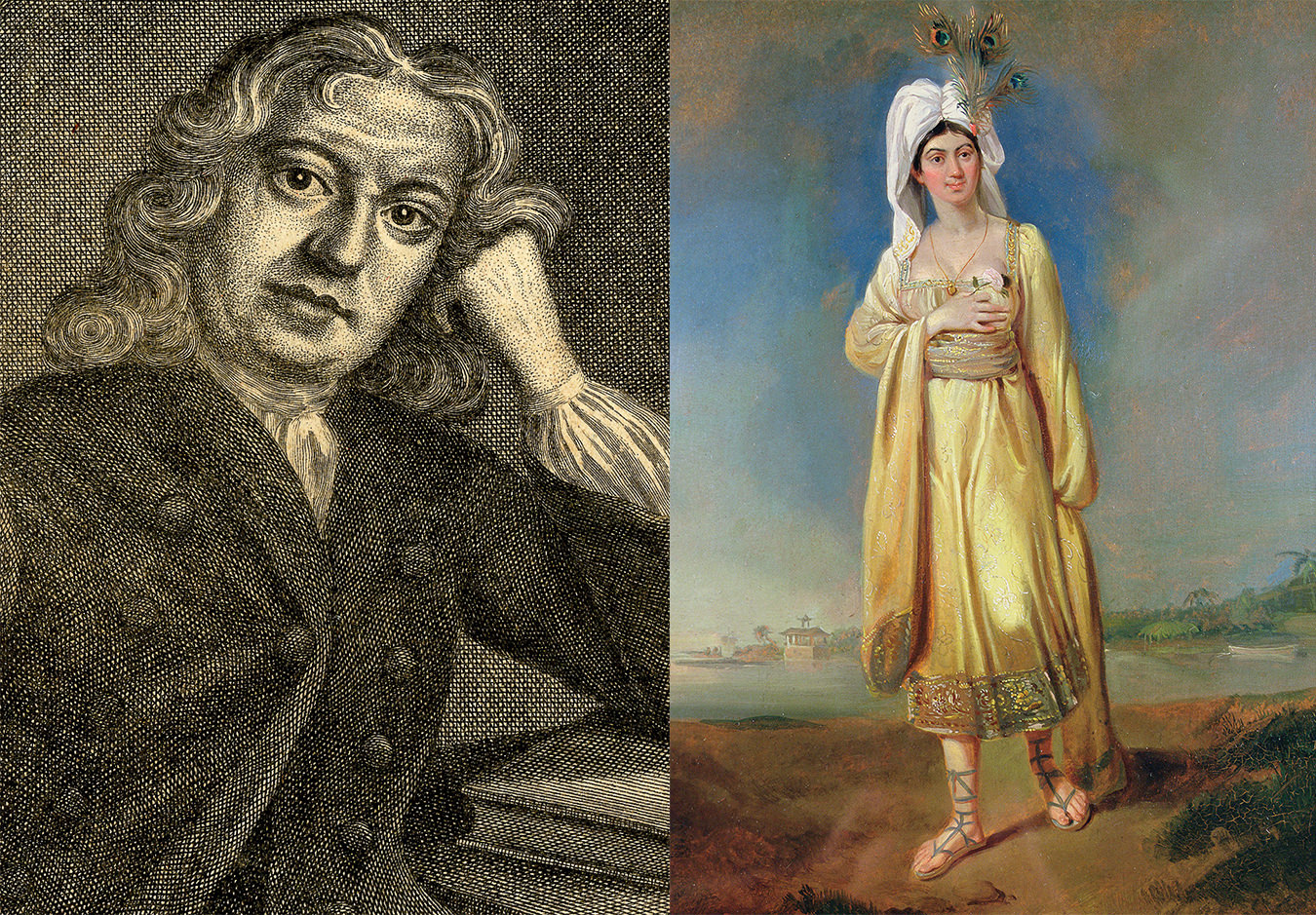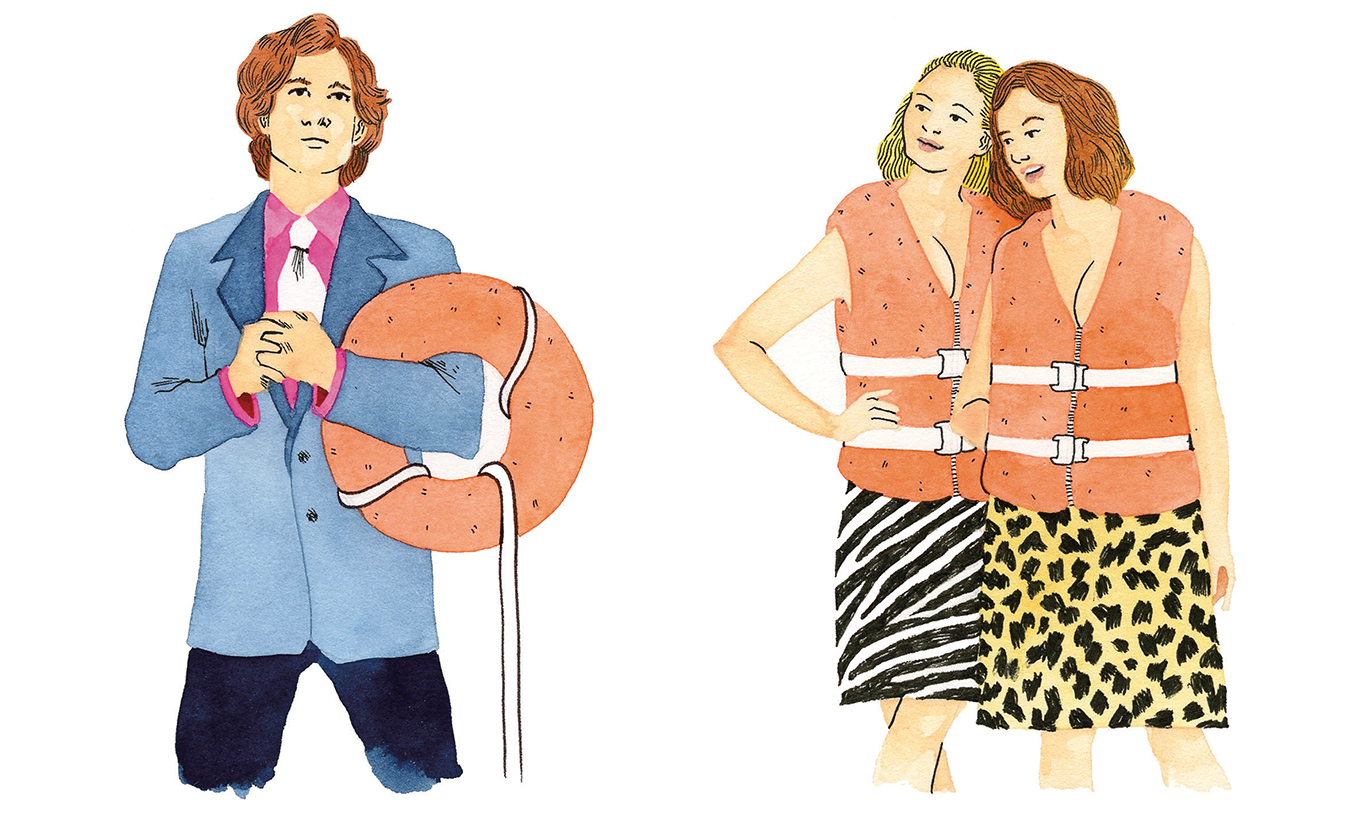Scalawags: The Fake Formosan and Princess Cariboo
Impressive imposters.

The world, it seems, is rife with imposters, most of them as dull as dishwater, like guys pretending to be war heroes or drummers in obscure rock bands. Others are more daring, like Ferdinand Waldo Demara and Frank Abagnale, who passed as doctors, airline pilots, preachers, and military officers. Daring they may have been, but scalawags they were not.
A more interesting American imposter was Frederick Emerson Peters, whose main gaff was posing as a relation of someone famous. The one time he varied his method and pretended to be a Venezuelan oil man, he got busted. Then there was the New Zealander Amy Bock, who spent her life being one man after another. Bock had numerous relationships with women who later said they didn’t know she wasn’t a man. Now that’s faking it.
But even these were amateurs when compared to a very few reckless and imaginative others. The real scalawags invented everything; not just their names and backgrounds, but entire languages and histories of the countries from whence they pretended to hail. Chief among them are two characters known to history, or at least our peculiar corner of it, as the Fake Formosan and Princess Caraboo. Their real names are a mystery. The only thing known for certain is that they were confirmed drifters, denizens of the road—and the road is, or was, a place made for fabrication.
The Fake Formosan
He was at first an ersatz Irishman, and he walked all over Europe in the late 17th century begging and pretending to be a pilgrim. But after coming across a real Irish pilgrim, and being able to speak neither Gaelic nor English, he decided to stick to Latin, at which he was fluent. But his Latin restricted him to hitting up the clergy and the high-born. Then, thinking it more exotic to be Japanese, he tried that; ignorant of the Japanese language, he invented a gibberish Japanese and, along with it, an entire system of writing.
In France, at a fancy dinner party where he was the exotic guest, he met a Reverend William Innes from Scotland who was suspicious of him. After our drifter had entertained by presenting “Japanese” translations of the Bible, Innes invited the young man to call at his residence the next day. There, Innes took down a volume of Cicero and asked for a translation into Japanese. The young man obliged. Innes thanked him and took the book, and then gave it back, asking him to translate the page again. When the two versions did not resemble each other, Innes said something to the order of, “Listen, I know you’re a fake, but that’s okay. If you’re careful, we can make a little money together.”
Innes advised him that, as it was within the realm of possibility that they might run into an actual Japanese person, he’d best try another country of origin. They settled on Formosa (now Taiwan)—who’d ever been there? Along with a new homeland, the drifter acquired a new name: George Psalmanazar.
The two men hit London in 1703, with Psalmanazar claiming he had been kidnapped in Formosa by Jesuit missionaries and taken to France, where he escaped and luckily ran into Innes. The pair was feted at all the best houses, where Psalmanazar eschewed the normal fare and dined only on raw meat and roots that had not been washed. He related bizarre stories of his homeland, translated from the “Formosan” by Innes. (“In my country, men are permitted to kill and eat their wives if suspected of adultery. And every year, we have a sacrifice of thousands of eight-year-old boys.”)
After a year of living high, Psalmanazar started attracting doubters, one of them being the astronomer Edmund Halley. To prove his assertions, Psalmanazar wrote a history and description of Formosa, including discourses on architecture, gastronomy, and religion.
Psalmanazar had a run of a few good years, but in 1711, Innes went to Portugal and left him to his own devices. By then he had become a bit of a music-hall joke. In 1712, he hooked up with a man named Pattenden, inventor of a whitening lacquer. When this deal didn’t work out, he joined the British Army, was discharged for incompetence, and tried to make a go of it by painting decorative fans. After a religious conversion, Psalmanazar wrote a play in Hebrew and became a literary hack. He also became addicted to opium. He mixed it with the pulp of oranges, convinced that this not only cured his addiction but that it was also a miracle health tonic. Psalmanazar got several of his friends to try his concoction, the result being that he created many new addicts. He also met Samuel Johnson, who took a shine to him; Psalmanazar is mentioned in James Boswell’s Life of Samuel Johnson.
He lived to the age of 84, and until his last days could be seen on the streets of London, preaching to strangers about getting right with God. After he was gone, in his desk was discovered what purported to be his autobiography: Memoirs of ****: Commonly Known by the Name of George Psalmanazar, a Reputed Native of Formosa.
Princess Cariboo
In England, during the first couple of decades of the 19th century, the police took to arresting beggars, rogues, and vagabonds. In 1817, a young woman wearing a turban was charged as all three. Evidently what saved her from being bound over was the fact that no one understood what she said. All sorts of people who spoke all sorts of languages listened to her uncomprehendingly.
She was eventually taken in by a family named Worrall. Her hosts were given to believe her name was Caraboo. When the girl removed her turban, strange markings could be seen on the back of her head. She recited what seemed to be a prayer before sipping her tea, and she became excited at Chinese characters on furniture.
The Worralls were a respectable pair, and it wasn’t proper to have an attractive single woman at the house who wasn’t a servant—and attractive she was, with her dark hair and dark eyes, her turbans and colourful clothes. She was passed from one rooming house and hospital to another. She enjoyed marking pieces of paper with strange symbols, and she also liked to write in the dirt by the banks of ponds. Her hosts sent some of her writings off to Oxford; they were returned marked “humbug”.
No one could solve the mystery of the young woman’s identity. But one day while she was walking down the road with a keeper, there appeared a traveller who understood her perfectly.
Just as Innes had crossed paths with Psalmanazar, this man, named Enes, appeared to Caraboo. They began chatting away like old compatriots, to the amazement of Caraboo’s guardian. The man, also dark skinned, announced that the girl was a real princess from Javasu, an island in the South Pacific. She had been kidnapped by pirates, and it was not until the ship was in the Bristol Channel that she was able to make her escape by jumping overboard and swimming to shore. She was thus wandering, disoriented, when the police found her.
Well, people were no longer reluctant to have her in their homes now that she was a princess, but the Worralls prevailed. Visitors enjoyed seeing her dance and climb to the tops of trees to pray to the god she called Allah Tallah. She made her own bow and arrows, and was skilled at bringing down game to supplement the Worrall’s larder. Guests sneaked around the property to glimpse her swimming naked.
Soon the princess was famous throughout the land. But a woman who ran a lodging house in Bristol read about her in the newspapers and declared she had rented a room to the girl, who claimed to be a gypsy. Other people showed up insisting that Caraboo was a prostitute, a beggar, a housemaid, a drunken ne’er-do-well. One fellow told that he had gotten drunk with her on rum at a roadhouse not long before. The young woman quickly went from princess to embarrassment, and some of that reflected on the Worralls, who shipped her off to that city of fakes and charlatans across the pond: Philadelphia, Pennsylvania, USA.
She was greeted enthusiastically in America. But after her first couple of months, she disappeared, or, at least, she disappeared to history.
The woman later returned to England in 1821 and appeared at theatres as Princess Caraboo. By the end of the year, she had gone to France and Spain and perhaps other countries where, evidently, she continued her ruse (if a ruse it was).
Around 1828, she was resident at a home for reformed prostitutes. Upon her release, she claimed to have mistaken the place for a nunnery. She then got a job behind the bar at a pub in London, where she became famous for her bizarre stories.
Later on, calling herself Mary Willcocks, she married, settled down in Bristol, and had a daughter. Her husband didn’t stick around long.
When she died at age 73 on Christmas Eve, 1864, Princess Caraboo had been supporting herself selling leeches at the Bristol Royal Infirmary.
But how much of an imposter was Princess Caraboo really? Why should the words of a lodging house owner who read the girl’s description, but didn’t see a picture of her—much less see her in person—be trusted more than the words of the traveller Enes? Those who had initially believed her story professed later that she was an obvious fake. Medical experts insisted those curious marks on the back of her head were really the result of cupping operations, likely from a poorhouse hospital, whereby incisions were made in the scalp and covered by egg cups to draw out bad blood.
If Princess Caraboo was really a poor girl, addle-brained since childhood, how and where had she learned to make bows and arrows? And as for Enes, what of him? For that matter, what of his predecessor Innes?
How did these two pull it off? Where did they come from? And who were they? Just a couple of drifters with imaginations too big for their surroundings and eager for more than life seemed to offer.
George Psalmanazar drawing from the National Taiwan University Library. Princess Caraboo of Javasu (Mary Baker) (1817) painting by Edward Bird ©Bristol City Museum and Art Gallery/The Bridgeman Art Library.








